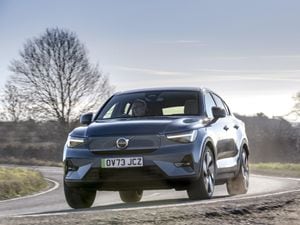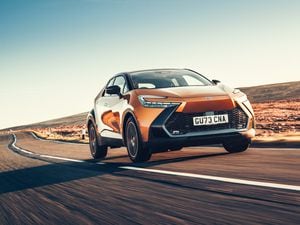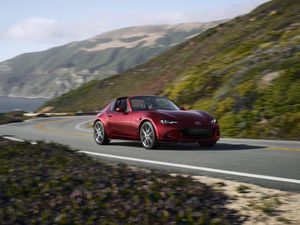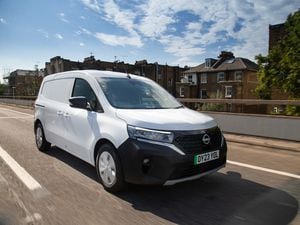First drive: The Renault Megane Sports Tourer E-Tech is a stylish and efficient estate
As part of a roll-out of Renault’s new hybrid technology, the Megane ST is the latest to get the treatment. Ted Welford puts it to the test.

What is it?

The Renault Megane is a car that’s still known for the controversial styling of the second-generation model, despite more than a decade passing since that well-known generation was around.
And while still proving popular, two generations later the Megane isn’t quite the huge hit it once was, even with its cool styling. So with more fierce competition in the family hatchback class – not least from crossovers like Renault’s own Captur and Kadjar – Renault’s set about giving the Megane a makeover to make sure it doesn’t fall by the wayside, but does it exceed?
What’s new?

The styling is arguably the best thing about the Megane, so it’s no surprise this has remained pretty much the same. Instead it’s the cabin that’s really the main difference, with Renault waving the same magic wand that’s benefited the new Clio and Captur recently – meaning an uplift in quality and more tech.
There’s also been a trim level rejig, and importantly the introduction of a new E-Tech plug-in hybrid on the Sports Tourer estate model – the car we’re testing here – which is part of a rollout of electrification on Renault’s core models.
What’s under the bonnet?

It’s a new powertrain underneath the Megane’s bonnet – and it’s exactly the same as what you’d find in the new Captur. It sees a naturally aspirated 1.6-litre petrol engine mated to a pair of electric motors and a 9.8kWh battery – producing 158bhp and 349Nm when combined. It also uses a clever clutchless automatic transmission, which is largely smooth and much nicer to use than the CVTs often found in hybrids.
But it’s not a car that’s all about performance – 0-60mph comes along in a leisurely 9.6 seconds and maxed out it would hit a claimed 111mph. Instead, it’s efficiency where the Megane scores well. With a 30-mile electric range, Renault claims it’ll return 217.3mpg, with CO2 emissions of 30g/km – the latter figure making it a superb company car thanks to a 10 per cent benefit-in-kind.
What’s it like to drive?

While our test car might have been dressed up in its R.S. Line gear, underneath its frock this is a sensible hybrid estate car, and that’s really how the Megane behaves on the road.
It’s a smooth and unobtrusive powertrain that cleverly makes the most of its different resources – leave it in the ‘MySense’ driving mode and it will do it for you, but Sport offers more responsiveness, while Pure lets you potter around just using electricity. While a touch firm in this sporty-looking grade, it remains comfortable and handles well for an estate car – making it more enjoyable behind the wheel than the Kia Ceed SW PHEV, its key rival.
The only real gripe is with the steering itself, which has a bizarre artificial heaviness to it – as if Renault has tweaked it to offer a ‘sporty’ feel, albeit not effectively.
How does it look?
Despite this current fourth-generation Megane being around for four years, it still looks as fresh as the day it was unveiled – and is dominated by huge lights at the front and rear.
As part of this update, those lights are replaced by LEDs as standard, with the ones at the rear featuring scrolling indicators. Look close and you’ll spot a new grille as well.
If you like sporty looks, you’ll also love the new R.S. Line trim, which replaces the previous GT Line. Renault stretches its marketing enough to say the design takes inspiration from F1, but whether you fall into that trap or not, this is a fine-looking estate car – helped by revised bumpers, large alloy wheels and chrome exterior trim.
What’s it like inside?

On looks alone, the updated Megane’s cabin doesn’t appear too different to its predecessor, but it’s on closer inspection when you notice the well-needed changes. Like before, the media system is integrated into the design, but has a new interface which is much sharper to use, while the quality throughout has definitely improved.
All E-Tech versions also benefit from a digital system, too, while in R.S. Line trim, you can have full Alcantara seats, which truly help to offer a sportier experience – they’re almost like bucket seats in terms of design, but still very comfortable.
In the switch from petrol power to electrification, the Megane’s boot has taken a practicality hit – reducing from 521 litres to 447 litres. However, it’s only really the underfloor storage that’s reduced, and the rest of the cabin is generally roomy, though those fancy seats and the sunroof on our test car did impact rear space somewhat. In that respect, the Kia Ceed SW is a more useful choice.
What’s the spec like?

Likely to be the most popular choice with fleet buyers, the no-frills entry-level Iconic trim level comes well-equipped as standard, including 16-inch alloy wheels, full LED headlights, keyless entry and front and rear parking sensors.
It really comes with all the kit you could ask for, but if you want style then it’s worth splashing out on the R.S. Line. This gets you all the racier looks, along with additional safety kit and a larger touchscreen and digital dials system.
As with all plug-in hybrids, prices aren’t cheap, with the standard Megane E-Tech costing from £30,685, which is very similar to the Kia Ceed SW PHEV. Splash out an extra £2,000 if you want the R.S. Line trim.
Verdict

Despite the Megane Sports Tourer not being one of the best-selling estate cars, with the introduction of this E-Tech plug-in hybrid, it deserves to be more popular. As before this is a seriously striking-looking estate car, and Renault’s focus on improving quality and technology as part of this update has certainly been noticed.
For company drivers and those that do short journeys and can charge regularly, it’s a very appealing hybrid estate car, but just make sure your lifestyle suits that 30-mile electric range before signing on the dotted line.





